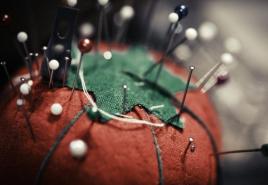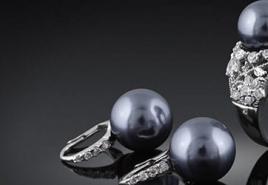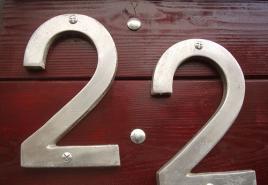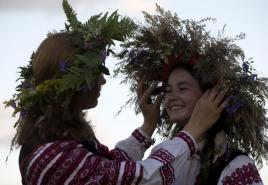Daily ration of a horse. Feeding horses How much hay does a horse eat per day?
The horse is a herbivore, adapted for long periods of time on pasture. Its feeding should correspond as much as possible to its morphological characteristics and be of high quality and easily digestible. Let's look at the basic rules:
1. Regularity. This is one of the main rules of animal nutrition. In this case, food juices will be produced at a certain time, and food will be easily digested. Feeding “as necessary” often causes diseases of the stomach and intestines.
2. Rest after feeding. Ideally, rest should last at least an hour and a half before and after meals.
3. Sequence and distribution of feed. First they feed hay (straw), then succulent feed and grain. It is better to give half of the daily amount of roughage at night, the second half is divided equally into morning and afternoon feeding.
4. Water. The animal should be given water at least three times a day. The daily need for water is 35-45 liters. Please note that in the hot season it increases by one and a half to two times. Never give cold water to a sweaty and tired horse!
5. Hygiene. It is important to keep feeders clean and use high quality feed.
Choosing feed for a horse
A horse is an animal for which the quality and composition of its feed is extremely important. Its range has recently expanded significantly, but many owners prefer to use traditional feed: hay, silage, oats, straw. For feeding horses, grass granules, root vegetable processing products, briquettes, mixed feed, vitamin mixtures, etc. are produced. Each owner decides for himself whether they should be included in the horse’s daily diet.Of the roughage feeds, it is considered the best meadow and cereal-legume hay. High quality hay is an excellent source of nutrients. Feed of this type in small volumes (up to 10 kg) is fed without preliminary cutting. If there is more hay or straw, it is recommended to cut them up and mix them with concentrated feed (oats, wheat, peas, cake, etc.)
In winter, hay makes up up to 50% of a horse's daily diet. These products should not be overused if the horse is a working horse.
Some horse owners use hay from different fields for feeding. This allows you to diversify the composition of herbs.

Chaff It is superior to straw in the content of useful substances. It is fed moistened or steamed or mixed with other succulent foods.
The best concentrated feedstuff is oats. It can be included in the daily diet without mixing. Oatmeal feed is quickly digested, has a beneficial effect on digestion, and contains a lot of protein and B vitamins. Animals with good teeth can be fed whole grains; horses with bad teeth and young animals are given crushed or flattened oats. Other types of feed grains must be crushed. Barley, rye, wheat, and corn are well suited for feeding horses.
The preferred legume for horses is peas or vetch. Such feed should be given only in crushed, flattened or ground (coarse) form, but not more than 2 kg. per day.Juicy feed ( tubers and root vegetables) perfectly complement the diet, they contain up to 90% water, little protein, but enough vitamins, microelements and fiber. For feeding, carrots, sugar beets (especially useful for working horses and lactating mares), and potatoes are used. They are pre-washed and crushed, sometimes mixed with other feed. Potatoes can be steamed or boiled. Feeding horses with sprouted, low-quality potatoes is not allowed.
Horses are also well suited for this type of feed: sugar beet molasses. This product goes well with roughage, increasing its taste. Working horses are given molasses (no more than 1.5 kg), after diluting it with 4-5 liters of water.
Often used from succulent feed corn or sunflower silage. It should be given to the horse mixed with hay.
Good to use in winter and early spring haylage. This is green grass preserved with carbon dioxide. In terms of nutritional value, haylage is comparable to hay and is close to green grass in terms of sugar content. Haylage is readily eaten by animals and in winter can replace half the daily requirement of hay.
Green food used in the warm season. To avoid digestive upset, the horse is gradually transferred to grass feed; first, it is better to feed freshly cut grass without taking the animal out to pasture. Do not feed stale green matter and grass with frost.
A source of protein, phosphorus and B vitamins are bran. This is a good feed for all age groups of horses. The daily norm of wheat and rye bran for horses is up to 4 kg.
Compound feed for feeding horses are factory mixtures consisting of several components that are combined depending on the age group. Divided into:
- full-feed
- concentrates
- feed additives.
Good energy supplement for working horses – dried pulp. It is pre-soaked in water in a ratio of 1:4.
If there is a lack of protein, sick and weakened horses and young animals are given animal feed ( meat and bone meal, fish meal, skim milk, etc.). They are necessary for a balanced diet, taking into account the average daily needs of the horse.
Sources of vitamins and microelements in a horse’s diet include:
- salt (30-60 grams per day)
- chalk (up to 60 grams per day)
- bone flour. Added only in case of lack of calcium and phosphorus in the diet (up to 110 g per day)
- dicalcium phosphate (for calcium and phosphorus deficiency) and disodium phosphate (for phosphorus deficiency)
- fish fat
- ordinary yeast
- premixes for horses. A mixture of vitamins and microelements to enrich diets.
Approximate daily diet
An average adult horse eats about 2 tons of oats, 5 tons of hay, half a ton of bran, 1 ton of succulent feed, 13 kg per year. salt. Thus, the approximate daily ration of a horse weighing 500-600 kg is:- 10-15 kg. hay
- 5 kg concentrated feed
- 1-1.5 kg. bran
- 2-3 kg of succulent food.
Feeding working horses
The daily feed requirement for working horses is determined depending on the body weight and the amount of work the horse does (light, medium and heavy work).Horses' daily diet includes roughage, concentrated and succulent feed. Yeast and premixes are suitable additives. The harder the work, the less roughage is given, and the component of concentrates reaches 70%.
The approximate feeding ration for working horses is 7 kg. hay, 7 kg. haylage, 5 kg. silage, 5 kg. oats, 50 g additives (premix), 40 g salt.
Approximate structure of the diet of working horses
| rude | juicy | concentrates |
|
|---|---|---|---|
| Work performed | % daily feed requirement |
||
| 50-60 | |||
Feeding sport horses
Feeding of such horses depends on the body weight of the animal and the sporting period (rest, preparation, competitions). The basis of nutrition for sports horses is concentrates, hay, carrots and premixes. Feed must be of good quality and easily digestible. An approximate diet consists of 7 kg of hay (cereals and legumes), 1 kg. corn, 1 kg grass flour, 400-500g. molasses, 100 g premix, 60 g salt. During the competition period, the amount of molasses and concentrated feed is increased.Feeding mares
Feeding pregnant and lactating mares has its own characteristics. An approximate diet is: hay (grain and legumes, 3.5-4 kg per 100 kg of live weight), a mixture of concentrated feed (40% oats, 35% barley, 25% corn), 1 kg of cake, 5-7 kg of carrots and beets, 3-4 kg of silage. In the last weeks of pregnancy, the amount of roughage and succulent food is reduced, and silage and legumes are replaced with other food or excluded from the diet.Feeding foals
Early foals receive the necessary substances from their mother's milk. At this time, the need for minerals arises, so the foal should have free access to a feeder with salt. The turning point is weaning from the mother. The diet includes hay, flattened oats, wheat bran, and cakes. It is useful to give molasses, sprouted oat grains, and carrots. As the foal grows, its diet is changed to meet its nutritional requirements.A properly selected diet is the key to a horse’s well-being. It is no less important in breeding production. After all, well-chosen nutrition, proper care and regular training are among the main conditions for breeding.
A properly selected diet is important for a horse. And although there is a large number of specialized feeds on the modern market, many farmers prefer to use traditional feeds: oats, silage, hay and straw. You can buy special granules, feed and vitamin mixtures on the market. They are not cheap, so not every farmer includes them in their horse’s diet.
Coarse hay is indispensable in the diet. How much hay does a horse need for the winter? Up to 10 kg of hay can be fed in its pure form. If the volume is larger, it should be cut up and given in a mixture with concentrated food.
Most farmers make their own hay. To diversify the diet, hay is taken from fields with different grass compositions.
Straw can be used to replace hay. It is lower in nutritional value, but rich in fiber. It is also recommended to feed corn and oat straw. It is given mixed with hay.
Oats are indispensable in nutrition. It is given in its pure form to healthy animals. Grinded for foals and horses with dental problems. Oats contain B vitamins, have a positive effect on digestion and contain a lot of protein. You can also give wheat and corn, rye and barley.
Indispensable in the diet are succulent feed, which consists of high-quality potatoes, root vegetables, and silage. Haylage is introduced into the diet in winter and spring.
In summer, the horse herd is switched to green feed. To avoid indigestion, do this gradually. First, a small amount of fresh mown grass is introduced into the diet, gradually increasing the volume, and only then is it transferred to pasture. In this case, you can save about 800-1000 rubles on maintaining a horse during the summer months.
Vitamin mixtures that easily replace cake and sprats are also important in nutrition; they can be corn, soy, or flax. Vitamins and microelements are also contained in salt, yeast, fish oil and special premixes. All this should be present in the horse's diet.
Over the course of a month, feeding an adult horse will require in total terms:
- Oats – 170 kg for 1190 rubles;
- Hay – 420 kg for 850 rubles;
- Bran - 42 kg for 300 rubles;
- Juicy feed - 85 kg for 510 rubles;
- Salt – 1 kg for 15 rubles.
The result is 2865 rubles for food.
Stable maintenance
To raise a horse, it is equally important to organize the premises in which the horse spends most of the day; you need to purchase equipment for the stable. Horses have a sensitive nervous system, so it is very important not only to feed them in a balanced manner, but also to take good care of them and organize comfortable living conditions.
When equipping a stable and stall for horses, a number of parameters are identified that must be observed. The stalls must be of sufficient size, well lit, and ventilation is required in the stable. The temperature is maintained between 15 and 18 degrees. Natural light plays a big role.
The stalls must be equipped with drinking bowls for horses and feeders, mangers for hay and a compartment for mineral supplements. A solarium for horses is also necessary. To simplify maintenance, you can purchase automatic waterers for horses.
In general, stable maintenance consists of maintaining temperature and lighting. Horses cannot tolerate high humidity, dirt and musty air. Cleaning is required daily. If you do not do this work yourself, you will have to hire a special person, his salary will be from 6,000 rubles per month.
Important! If you build a stable from scratch and choose an economical option for 2 heads, then the costs of construction and equipment will range from 400,000 to 500,000 rubles.
The horse must not only be fed well, but also properly looked after. They love cleanliness very much, so they need daily washing with soap. The fur, and especially the mane, is combed out with specialized brushes and a scraper. After brushing and washing, the horse is dried. You will have to spend up to 30 minutes a day caring for a horse; during this time you can communicate with the horse, which is the responsibility of the horse handler who feeds and waters the horses.
The next mandatory procedure is shoeing the hooves. For these jobs, they hire a specialist who will have to pay, unlike other horse care work that you can do yourself. How much does a farrier cost? He charges from 2000 to 6000 for work, the cost depends on the complexity of the procedure.
Ammunition
Ammunition
For the horse it is necessary to purchase special equipment. These include blankets for different seasons, saddle pads, and many other small items. Bandages and boots are required for the legs. A mandatory purchase is a saddle; it is better to pay more right away and buy a good saddle and bridle. These are not always monthly expenses; in this case, the cost of ammunition will cost up to several thousand a year.
Veterinary services
Note! If the horse gets sick, the cost of veterinarian services will increase significantly. She will need treatment, diagnostic equipment, and a specialist will have to be called to her home.
Horse tracking systems
In addition to all of the above, there will be costs for the purchase of special tracking equipment if the cultural herd method of cultivation is used. After all, with this method, animals gain weight quite quickly and grow well, but at the same time they cannot be left unattended.
Electric shepherds for horses are becoming increasingly popular. It is a low current charge fence. When a horse comes into contact with a fence, it receives a low-frequency electric shock, which does not cause any damage to it, but causes discomfort. In the future, she will develop an instinct and will stay inside the fence without trying to leave its confines. The cost of an electric shepherd is around 7000-10000, these are the cheapest options.
On a note. At the same time, they take into account that these are one-time costs; you will not have to hire personnel to monitor the herd while walking, because their services are not cheap.
GPS trackers are no less popular - they are a kind of tracking system. To do this, horse trackers are worn by several animals, the leader and those that the animals willingly follow. They are invisible, but at the same time they have a large charge; with the help of satellite monitoring you can always find out where the herd is. It is very convenient to set certain parameters of the territory for walking; if horses go beyond their boundaries, a warning signal will be received. The cheapest GPS trackers cost from 4,500 rubles, but do not forget about the costs of their installation. There are also more expensive options - up to 20,000 rubles.
Horse microchipping is a similar system to the previous one, in which horse chips are implanted under the skin of the animal. This is a very convenient microchip that is inserted in accordance with the instructions. It’s quite difficult to mix something up, because in order to chip, you just need to do everything according to the rules. During installation, a characteristic click is heard, which signals that the process is complete. In the future, it will be very easy to track the location of the microchipped horse herd.
As a result, if we talk about how much it costs to maintain a horse per month, then the amount is quite significant. Therefore, you need to decide for yourself why you need a horse, and whether the burden of financial responsibility will be small. Even if you try to save money, you won’t be able to minimize costs below 20,000-25,000 rubles per month. So the issue of buying a horse must be approached with all responsibility, because it is not for nothing that they say: “buying a horse is easy, selling it is difficult.”
Going to the Ratma stables the other day for a far from pleasant reason (information that the horses there were so emaciated that their ribs showed through as if on an X-ray was posted on the city forum, a similar appeal was received by the editor), I remembered how some other six or seven years ago, townspeople could admire the most beautiful sport - equestrianism. Jumping and dressage competitions were held here, and multi-kilometer runs were also held...
Ancient Russians loved horses excessively, and descendants must justify their choice
(“Weekly for Horse Hunters,” 1823).

In the field behind the stable, on the fresh grass that had turned green after the snow had melted, very thin horses were grazing, especially the red stallions that were closest to us. A little further away, with its tail raised, a foal galloped merrily near its mother mare. He was born, says the owner of grazing horses, Elena Saraeva (pictured), on the night of May 8-9, that is, he is only a week old. The stallion has not yet been given a name, but it will most likely be associated with a significant event.
The baby's muscle mass is fine, and his mood is cheerful - he runs around and plays under the close supervision of his mother. The mare did not let our editorial team get close to her: as soon as we tried to get closer, she turned around, covering the foal, and took him away.
Horse menu this winter
Along with the foal, Elena has six horse heads on her peasant farm (this is the legal status). Our first question to her: Why are the horses so thin?
– This year we had a problem with hay; there wasn’t enough of it. Usually in April the horses are already out on fresh grass, but, you know, there was still snow until the end of April. In all the farms, it turned out that they miscalculated a little. We traveled all over: Kimry district, Taldomsky, Dmitrovsky - everyone was holding hay for the calves, no one knew when the grazing season would begin. Plus, hay has skyrocketed in price (if in winter we charged 5 thousand rubles per ton, now it is already 7 thousand - this is from nearby regions, delivery from the Moscow region is 15 thousand), and they carry a large tonnage - at least 10 tons , we don’t need so much, and we don’t have such funds.
– How much hay does a horse need per year?
– On average, per year – from October to May – one horse eats 5 tons of hay.
– Is hay their main food?
– Yes, this is roughage (fiber), and in winter it is not replaceable for the horse’s digestion, but oats are concentrated, and you can’t feed them a lot.
– In the villages, in my opinion, they feed horses oats...
– You know, our gray horse Veresk is from the village, so he practically did not know oats - he grew up mainly on straw.
– Was there no hay at all this winter?
– It was until February, then we had to replace the hay with grass meal, but horses don’t really eat it. We have no problems with oats, we ordered five tons this year, it’s there, plus bran and feed. Now that the grass has grown, the horses no longer eat hay, and we only feed them oats in the evening.
– How often should horses be fed?
– In winter, three times a day, oats every six hours. They don’t need hay to constantly lie in the feeders; for example, Gray, if he hasn’t eaten the hay, pushes it down to his feet and doesn’t pick it up from there. The regime is this: we arrived in the morning, gave them water, gave them oats, put hay in the pen, the animals walk and eat hay, then we turn them in, give them some more water in the afternoon, give them oats in the evening as well, but in the stall. In the summer we feed them, let them go out to pasture, they graze until the evening, and in the evening we drive them in and give them oats. Now they started giving them porridge instead of oats so that they gain weight faster.
“People who have seen horses in this condition are very concerned. Maybe the hay can be replenished with something, like carrots, for example?
– No, unfortunately, only grass flour. But the horses are not accustomed to it, they eat it reluctantly, and besides, it is very expensive: our bag costs 1 thousand rubles.
– When they began to lose weight, did this condition bother you? Did the vet examine them?
– Of course, this worried me, I called the veterinarian Olga Loginova (we work with the city veterinary station), she examined them. Conclusion - the horses are healthy, but they are underweight. Thinness is fixable, come back in a couple of weeks and see for yourself what miracles fresh grass can do.
Naturally, we accepted the invitation and in two weeks we will once again visit the peasant farm of Elena Saraeva, we hope that then the ribs will not be visible through the horse’s sides.
Not hungry - sick
In addition to Elena’s six horses, including a newborn stallion, there are three more horses in the Ratma stable. Honestly, when I saw them, my heart sank.
A mare, a stallion and a foal belonging to a private owner, Svetlana Plekhanova, were locked in a warm, damp room while their brothers grazed on the spring grass.
You only had to look once into the sad eyes of the white mare Zina to never forget them. It is clear that the horse is suffering from a serious illness. The stallion doesn't look his best, and it looks like he also has health problems...
Their thinness is not due to lack of nutrition, Svetlana explains, they do not gain muscle mass because they are sick.
– Have you purchased sick horses? – we asked.
– The mare was given to me a year ago, then I didn’t know that she had a chronic disease - emphysema, I bought a stallion for her, and apparently, after racing, he had problems with the spine, he often falls.
- So you need to treat if you are sick, it’s a pity to see how they suffer. Did the vet examine them?
– Yes, I invited a veterinarian from Moscow, he prescribed treatment: IVs, injections. As of May 16, the course of treatment was completed. It remains to be seen how the body will recover. Now they receive good nutrition: oats, porridge, plus vitamins...
“Won’t they recover faster if they graze on the grass during the day rather than sit in a damp room?”
– The horses walk, but, based on the specifics of the disease, I let them out every night and early in the morning, until the heat rises. During the day you can only walk in cloudy weather. The rest of the time, the fumes rising from the ground are destructive for unhealthy horses.
- But the foal is healthy, could he walk during the day?
– The baby is seven months old, fortunately, he is healthy and I am sure he will be healthy. It's bad to walk alone. At night they graze together,” answered Svetlana Plekhanova.
By the way, Svetlana is a livestock specialist by training, a specialist in horse reproduction, that is, a professional and, I think, she knows what needs to be done so as not to completely destroy the horses.
Without water and light
In parallel with the above-described problem regarding the healthy nutrition of horses, we looked inside the stable, which at one time was not only the pride of the owner of the building (JINR), but also the city as a whole, and became acquainted with another one. We'll talk about it in more detail later, for now we'll just outline it.
The stable currently produces a depressing impression, some of the premises of which are rented by Elena Saraeva. “As soon as the Akhal-Teke people of Tito Pontecorvo moved to Svyatiye,” she says, “they immediately dug up an electric cable here - there has been no light for a long time. We’ve been standing for seven years, and there’s been no light for seven years. We start the horses in the evening, by candlelight; at one time there was a generator, but now there is no generator. We manage with flashlights.
After one of the homeless people climbed into the basement and removed the plug from the hot water pipe (the geyser was flowing for three days), the water was also turned off. I put the horses here because it’s a pity to see the stable falling apart, because I used to work here.”
Inspecting the premises of the stables, which fall into disrepair and destruction from year to year, I thought: why not make a children’s equestrian club here. It would pay off, Elena believes, by keeping the horses stationed, which would be of interest to everyone, because there is very good pasture here. If everything is restored, then people will come here, because staying closer to Moscow costs 15 thousand rubles and more, but here we have 8-10 thousand plus pasture.
The layout of the stable building is very interesting: on the ground floor there are four rows of stalls, an arena for driving in young animals, on the second floor there are living quarters for staff, a fireplace room with a kitchen and a bathroom. There is a basement. Once upon a time there was a table tennis table. Fenced area of 2 hectares. The stable accommodates more than 30 horse heads. By the way, at one time there were 200 Tekins standing here (in the arena, several heads in stalls, in the aisles, in the hayloft).
– I have repeatedly written letters to the owner of the building (JINR) with a request to give it to a children’s equestrian club: this complex should work for the city. But, alas, the issue has not been resolved today. And now I am receiving letters demanding that I vacate the stables by July 3,” concluded Elena Saraeva.
By the way, last year Elena, the mother of four girls who also love horses and help at the stables, completed coaching courses at the St. Petersburg Academy of Agribusiness and Management, in addition, she received a judge’s certificate, and there she also completed practice judging equestrian competitions, judged show jumping , and dressage, and even a separate pony class.
I would like to conclude with the words of Tatyana Ryabova, a senior researcher at the All-Russian Research Institute of Horse Breeding, said in 2005, when the first horse race took place in our city: “It is very pleasant that in Dubna the interest of young people in horses is not lost. I hope that the initiative of such competitions will continue."
Tatiana Kryukova
F photo by Yuri Tarakanov
If you are trying to imagine what awaits you with the purchase of a horse, how high the food costs are, then this article is for you! In it we will talk about the daily diet of an average horse weighing 500 kg.
An average adult working horse eats about one and a half tons of oats, 4-5 tons of hay, 500 kg of bran, and a ton of carrots per year. In addition, you should take care of your salt supply. It will require approximately 13 kg per year (a little more than a kilogram of salt per month).
If we reduce the time interval from a year to a day, then an average horse weighing 450-500 kg will need:
- oats - 5 kg;
- hay - 10-13 kg;
- bran - 1-1.5 kg;
- carrots - 2-3 kg.
It is necessary that the horse always has access to table salt (it is more convenient to serve it in the form of a lick briquette). Of course, when calculating the daily ration, it is necessary to make adjustments for the age of the horse, its size, weight, and physical activity used.
Compliance with the rules of feeding and watering is very important to maintain the health and strength of your animal. However, do not forget to monitor other factors: daily cleaning, timely forging, and the condition of the ammunition. The horse will require a lot of your time, attention and knowledge, but will be able to repay you handsomely.







